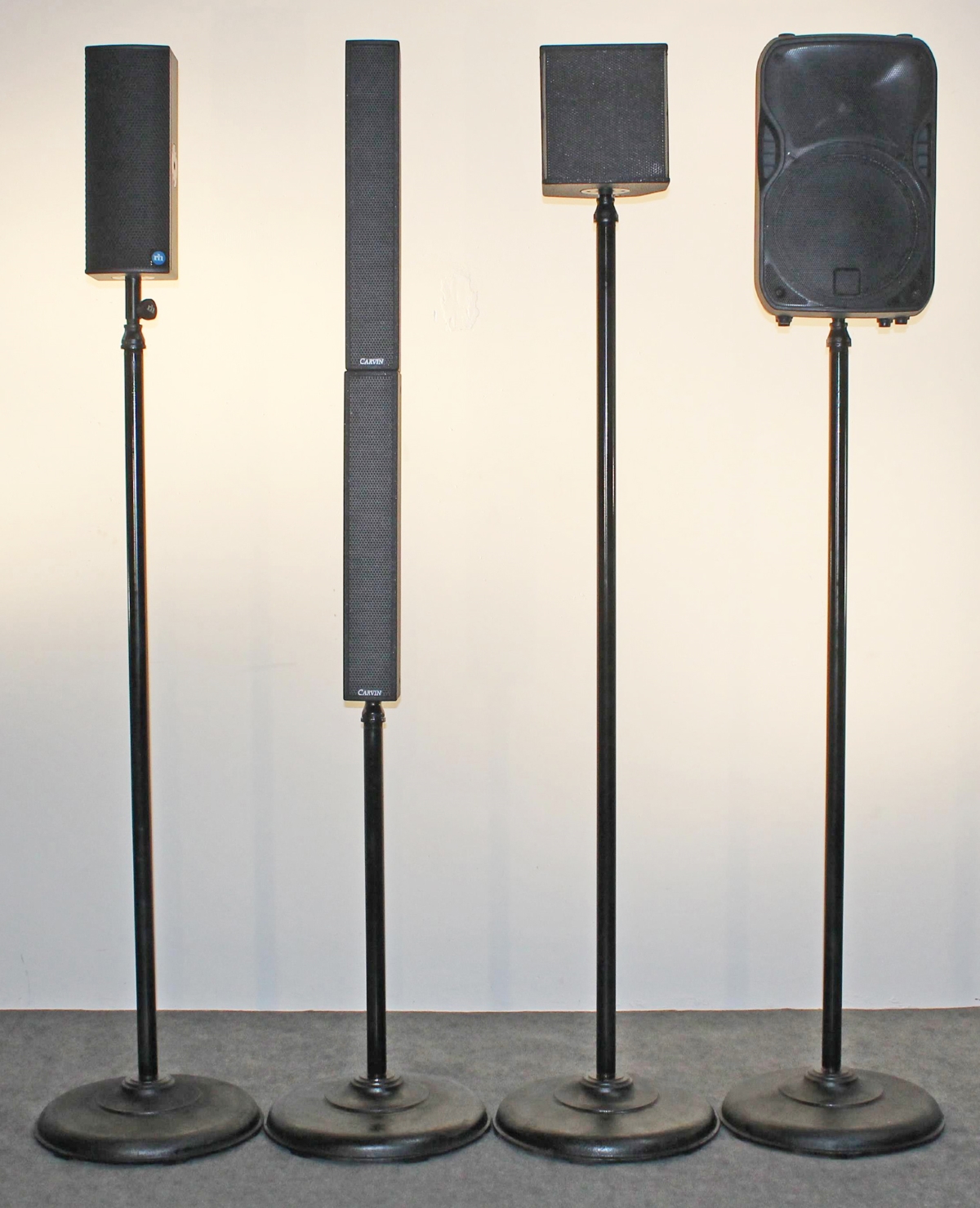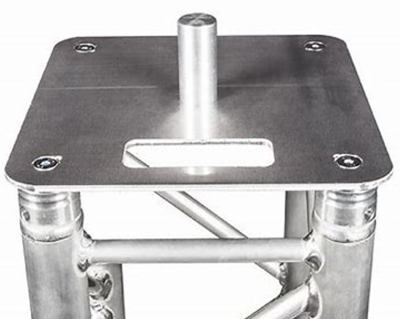Typically, small- to medium-sized events are covered by a pair of portable full-range, 2-way loudspeakers on stands (often referred to as “speakers on sticks”). For gigs with music, cabinets with 12- or 15-inch woofers are most often employed, while for speech-heavy events, and/or when only background music is required, loudspeakers with 8-, 10-, or 12-inch woofers are the frequent choice.
Subwoofers can be deployed to augment low-frequency reinforcement when the program requires it. The full-range loudspeakers can sit directly on top of the subs or be mounted atop them on poles, which places them higher up to avoid obstructions. This also eliminates stands and can make for a nicer-looking configuration. The loudspeakers are typically positioned to the left and right of the performance area and fed a stereo signal.
These general placement approaches usually do the job in terms of coverage, but there are times when an alternate approach is preferable. For shows with limited coverage demands, sometimes a single loudspeaker on a stand, receiving a mono feed will suffice.
My company recently handled a store grand opening this way, and also utilized this method successfully for an outdoor show last year to reinforce announcements. The key is making sure the single loudspeaker has a wide enough pattern and SPL capability to adequately cover the audience area.

For most the events we serve, we mix in mono. The PA may be set up in stereo, but we never actually pan anything, so the same sound comes out of both sides.
The exception is that we may pan certain inputs to lessen the chance of feedback; for example, a podium microphone closer to one loudspeaker may be panned a bit to the opposite side.
There are times when two stacks are overkill, and using a single stack frees up some additional space and helps with sightlines. In fact, the single stack does not need to be right next to the stage at all.
A Little Boost
Years ago I filled in for a buddy in mixing a band at a local bar. The room was narrow but deep, with the stage located across the short wall facing into a long room.
His usual approach was to place the subs in one corner, topped by two full-range loudspeakers. The lower box wasn’t even powered up; it just elevated the upper cabinet to a more ideal height so that the horn was above the standing crowd. By placing the stack in the corner, the subs got a little boost as well.
As many may already know, placing a sub next to a boundary such as a wall creates an SPL boost because its output is radiated into a smaller solid angle. A sub on the floor will exhibit a 6 dB boost in level compared to one in “free space.” This is called half-space loading. Against a wall (quarter-space loading) yields about 12 dB more, and placement in a corner takes it to about an 18 dB boost (eighth-space loading). Note that these are theoretical figures, and in practice, some energy is absorbed and/or transmitted through the boundary, but the concept is valid.
Besides the theoretical 18 dB boost, placing the subs in the corner helps in avoiding the creation of a “power alley,” which frequently occurs in the listening area equidistant from both subs. Listeners hear the low frequencies louder because the sound waves arrive from both sources at the same time and sum constructively. Meanwhile, listeners off-center, closer to either side, get different arrival times, and the sound waves may also destructively interact with each other.
Sometimes it’s best to use a single sub cluster to eliminate the power alley as well as to attain a more even level of LF energy throughout the coverage area. The most common configuration is a center cluster of subs joined by left and right mains. While subs in front of the stage can wash bass program back into the performance area, the use of directional subs or deploying them in a cardioid cluster/array helps keep potential stray LF output under control.
We recently worked with a jazz quartet at a small school theater, placing three compact, single 18-inch subs in a row in front of the stage, with the center unit reversed (facing backwards). It was polarity-inverted and delayed so the output from all three arrived at the same time at the rear, with the backward unit providing destructive interference and thus reducing the overall level of the sound.















